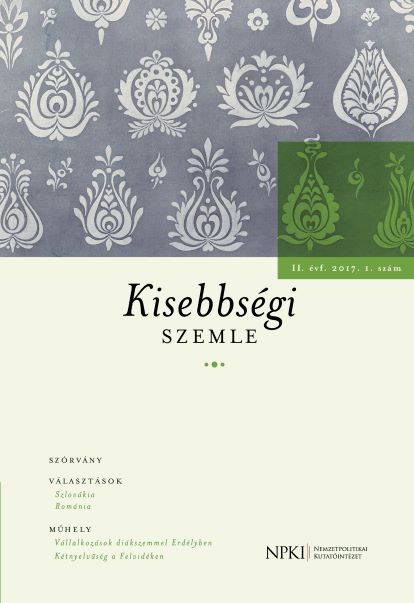A Kárpát-medencei magyar szórványok településszerkezete és főbb demográfiai jellemzői
Dispersed Hungarian Settlements and Their Demographic Characteristics in the Carpathian Basin
Author(s): Patrik TátraiSubject(s): Politics, Social Sciences, Sociology, Ethnic Minorities Studies, Politics and Identity
Published by: Nemzetpolitikai Kutatóintézet
Keywords: demography; Dispersed Hungarian Communities; Carpathian Basin;
Summary/Abstract: The present study aims at outlining the settlement characteristics and the ethnodemographic processes of the Hungarian dispersed settlements in the Carpathian Basin. Applying two definitions for dispersal (1. Hungarians constitute less than 20 per cent of the local population; 2. everybody belongs to the dispersed settlements who live outside the relatively contiguous Hungarian areas) the paper compared the current situation and perspectives of Hungarians living in neighbouring macroregions (Slovakia, Transcarpathia, Transylvania, Vojvodina). Research results show that 400–600 000 Hungarians live in dispersal depending on the definition. Although the public discourse associates dispersal with rural settlements, Hungarians are overrepresented in urban areas unlike the Hungarian clustered minorities in the rest of the Carpathian Basin. The dispersed communities keep changing rather than being stable; their dynamics (reproduction and disappearance) is closely connected to assimilation and migration. These settlements are characterised by unfavourable ethno-demographic features such as low natural growth and high rates of assimilation. As a result, the decrease in the number of the dispersed population far exceeds the clustered minority Hungarian average.
Journal: Kisebbségi Szemle
- Issue Year: 2/2017
- Issue No: 1
- Page Range: 7-31
- Page Count: 25
- Language: Hungarian

